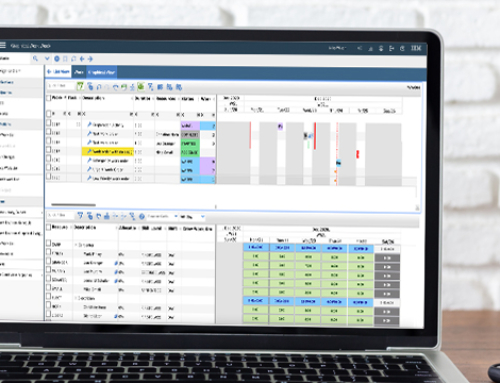
Maven is a Premier ELite Sponsor of FMMUG
Mike Cowley, of CE Maintenance Solutions delivered a keynote address at the recent FMMUG annual meeting entitled “Smarter Asset Management”. His discussion addressed ever-valuable maintenance themes of reaching a balance between reactive and proactive maintenance and increasing effective wrench time. He provided many points in support of expanded and aligned use of Maximo. The information Mike presented should have been reassuring to all the Maximo users in attendance, whereas the same basic concepts of Maintenance Management he presented are strongly supported and guided by Maximo in its various incarnations. Mike may have sent some users back home reconsidering how they were using their Maximo tool sets – which may be a good thing.
The audience responded almost silently to a series of pointed questions, some of which displayed Mike’s expertise in the hands-on side of Maintenance Management, others perhaps seeking to expose perceived Maximo users’ weaknesses in fully leveraging Maximo as an investment. As an observer, this author considered that none of us is quick to admit that, while we have a powerful tool set built into Maximo, many users are not taking advantage of much of it. Not yet, anyway. However, I don’t believe this is the major point Mike wanted the audience to take away. Let’s look at one example.
Mike posed the question “How many of you are using 100% of Maximo’s capabilities?” then, repeated the question several times, each time substituting lesser percentages. I heard a few barely audible responses, and one in particular stuck in my mind: “Nobody uses 100% of what Maximo offers. Everyone uses it differently.”
Both are valid points. Mike never claimed to be a Maximo expert, but he is an expert at best maintenance practices, and Maximo is intended to help define and control those practices by providing what’s needed to implement, maintain and adjust them as needed. He reminded us of the importance of keeping our maintenance organizations grounded. By this, he meant that we can get caught in a series of loops wherein the focus of our effort is to satisfy the requirements of setting up, entering and reading data from the tools in our systems – which would distract us from the core purpose of a maintenance organization. A well-respected colleague commented that we should ask, “Is Maximo working to support us, or are we working to support Maximo?” The bottom line is that a well-grounded maintenance group has an acceptable ratio of total work hours to actual wrench time. There is a best ratio which is unique to each organization.
How can an organization get wrapped up in these loops? Over the years, IBM has responded to various users who have required high granularity in certain areas, enhanced communication in others. Some are managing numbers of similar assets while others have a wide variety of unique assets. Some have large crews with many unique skills while others have smaller staffs sharing overlapping skills. While Maximo includes functionality to support any of these situations (and many others), rarely does one organization need to support all of them, however they are all there available to us. This is perhaps why no one was able to reply when asked who uses 100% of Maximo. No one would be wise to try to implement every function Maximo makes available. Principles such as Pareto and the ever-simple KISS methodology remind us of how easy it is to put too much effort in a non-productive direction. There’s no need to feel bad about using a less-than-total set of capabilities in a system as all-encompassing and robust as Maximo. The bigger questions are perhaps, “Are we ready to implement some additional features or functionality now?” and “Are we trying to do things we don’t need with Maximo?”
Every organization decides which capabilities to take advantage of when first deploying Maximo. Experience tells us that the way Maximo was originally configured – the specific tools which would be heavily relied upon and how they would be used – almost always addressed needs that were paramount at that time. Generally, the organization’s use of Maximo has resolved those issues and progressed. Now, at a later point in time, it’s easy to take for granted how Maximo is helping to sustain those improvements when we face new business needs and concerns. How long has your organization been using Maximo? According to the US Bureau of Labor Statistics, in 2012, the average job tenure in the US was 4.6 years. If Maximo was first implemented 5 or more years ago, the people who influenced and decided on it may no longer be involved. Many of their original goals for Maximo may not be valid today.
In thinking on Mike Cowley’s keynote session – in context with what we know about Maximo and the control and visibility it has provided until now, building on it as a solid foundation will certainly bring more tangible benefits. If we suspect that we’re becoming a bit ungrounded with it, we’re really getting an indicator that it’s time to reassess how we use Maximo. Are we using the functionality we really need? Do we know how to? Are we spending time and money using functionality we really don’t need or benefit from?
A good assessment is necessary. A good starting point, which shouldn’t be difficult is to compare the total maintenance hours to actual wrench time for a recent period. Be sure to collect only real wrench time – not working crew hours. When calculating the total, include administrative and overhead hours. Compliance requirements, safety and liability issues ensure that most will never reach 90%. However, if you are at 40 or 50% wrench hours, it’s time to take a harder look.
It’s common to assess an environment and find numerous tasks, customizations and reports that are no longer needed, yet are burning hours. Likewise, before recommending a version upgrade, we find enhanced functionality that a user should be benefiting from, but isn’t. This doesn’t mean that it’s time to throw Maximo to the wind – it’s not a disposable tool. Maximo is almost a live environment, constantly maturing through regular updates and enhanced flexibility and processing capabilities that exceed its closest competitor by a long-shot.
A skilled, properly trained and certified team of experts knows how to realign Maximo to ensure that you are always getting the most from it. Maven can help you get your wrench time up, your ratio of unplanned work down and your administrative costs reduced. We can help you find the most cost-effective way to accomplish these goals by leveraging your in-house talent and supplementing only when and where needed. Give us a call or an email – you may qualify for a no-charge assessment, which is the first step toward getting your organization where it needs to be. We agree with Mike Cowley regarding best maintenance practices. When aligned with your business requirements, Maximo has these best practices built-in. Let’s make them easy and cost-effective to implement!






